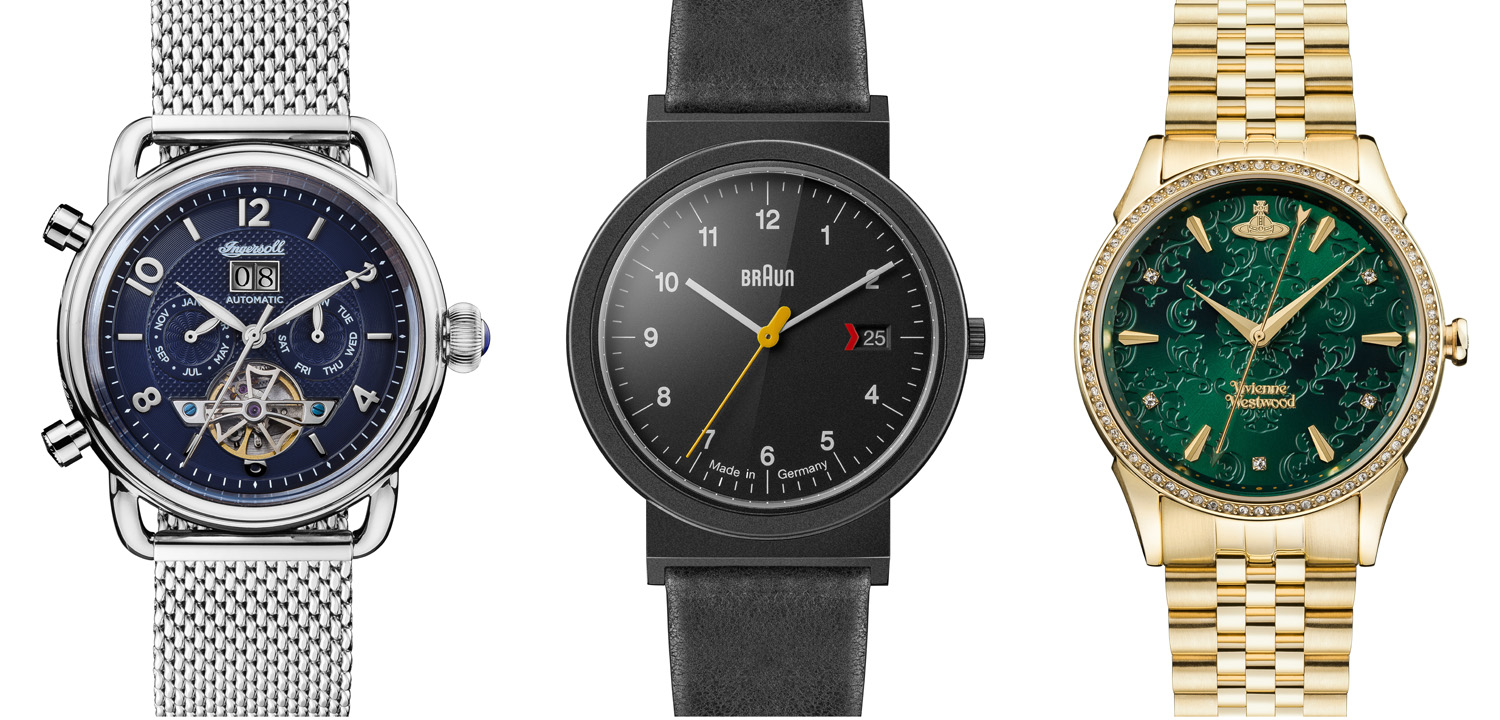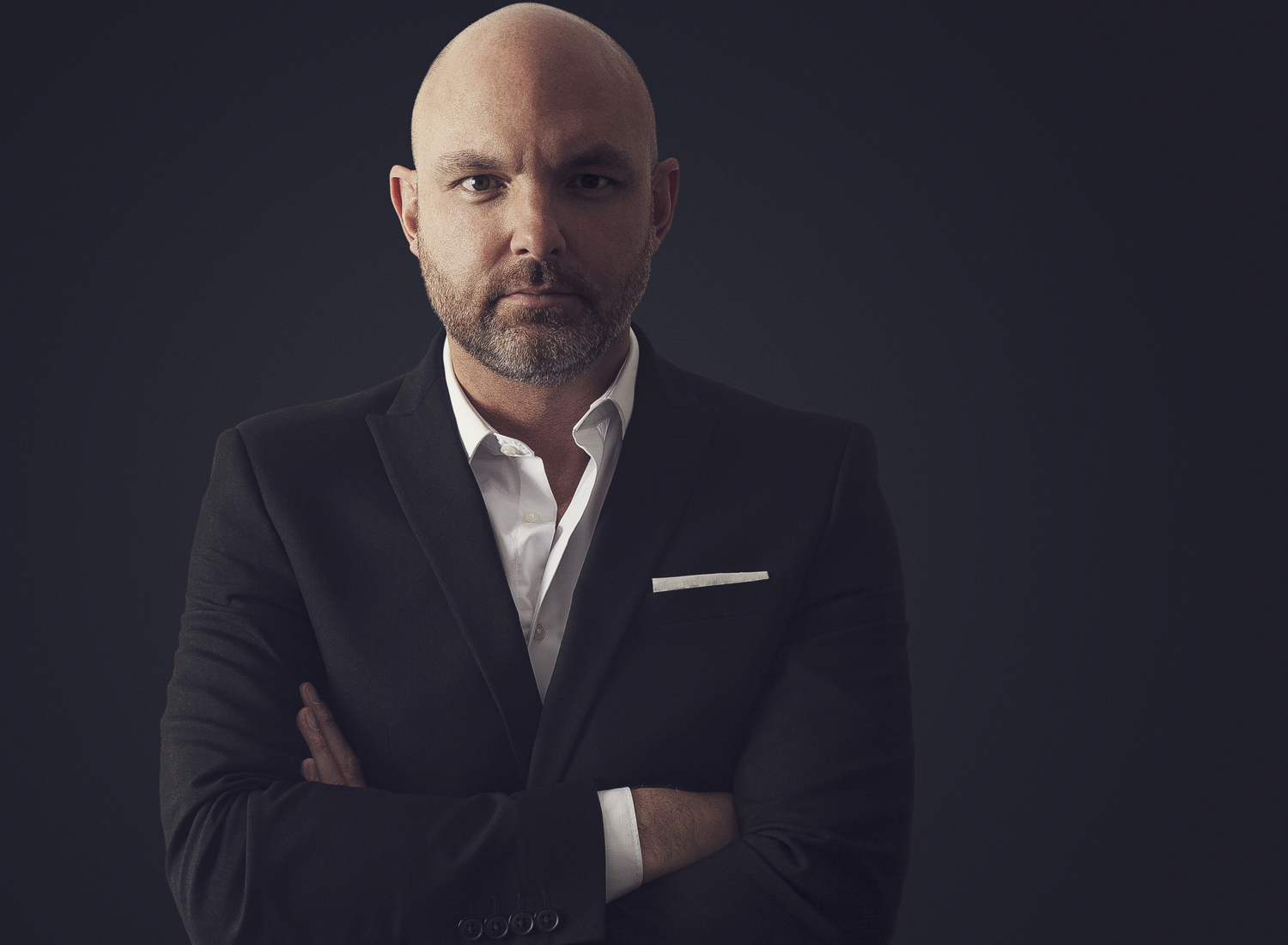Less is so often more. Zeon oversees far fewer brands than a decade ago, but has command over those brands for the whole world. This means it can focus on story-telling and developing deeper relationships with both retail partners and end consumers, and that is leading to less price-sensitivity, the company’s managing director Simon Gillham (pictured above) describes to Rob Corder.
These are challenging times for watch brands and distributors chasing customers for inexpensive, on-trend, timepieces. After the 2014 “Michael Kors moment”, sales of licensed fashion watches have been in sharp decline, and the broader market for everyday watches from specialists like Timex, ICE-Watch and Sekonda is not much easier.
Zeon is a company with a foot in both camps. Its bestselling watch brand is Vivienne Westwood, which it designs, manufactures and distributes world-wide on behalf of the iconic British fashion house.
It also owns American heritage brand Ingersoll outright and distributes Braun watches for the German industrial giant. The company has world-wide rights for all three brands.

Succeeding in this space requires a far greater set of skills than a business like Zeon would have required even five years ago when the name of the game was to sell watches into retailers, whether they were selling-through or not.
Sell-in is still an important measure, but gone are the days when product was shoved down the throat of retail partners. Now, sell-in rises only if the retailer has sold enough of its current stock and needs replenishing. It is remarkable that it has taken so long to get to this state of affairs because it is a far more healthy balance driven entirely by what customers rather than retailers want to buy.
The market must have looked a great deal more encouraging when Simon Gillham was promoted to become managing director of Zeon in 2014.
He had been with the company for 15 years, rising to become sales director, before taking the top job. Well before that point, however, he was working with the rest of the senior executive team to reinvent the company and make it fit for where he saw the industry heading.
So, while promotion to become managing director might have been the ultimate hospital pass, Mr Gillham was already part of a root and branch transformation process. “Around 10 years ago we started to see a real shift in the watch industry. It was evident that it was not enough to be strong in the UK alone. The world was becoming much smaller and accessible with greater transparency and similarities across different territories so having a global reach was important to maintain a competitive advantage,” he recalls.
The entire watch industry, from top to bottom, is selling fewer watches. Since 2013, the number of watches exported by Swiss manufacturers has fallen from over 28 million to 23.7 million last year. Over the same five year period, the value of those exports is virtually unchanged because average selling prices have risen.
Zeon is operating at the volume end of the ecosystem, and is also pushing to increase the typical price people pay for its watches, and to find new markets at a time the UK has been contracting.
“We made a conscious shift from signing distribution agreements just for the UK, to licensing global brands across all territories. We developed a clear strategy to identify global brands with integrity and longevity to become long term partners. These brands would become a vehicle to launch premium product, where sales would be driven by delivering great product designed to meet discerning customers tastes rather than price point driven retail,” explains Mr Gillham.
And it is not just Zeon’s strategic decision to push into higher price points. Manufacturing costs were also rising and putting pressure on margins. “Increasing production costs from the Far East was making it tougher to run a price targeted business whilst maintain our high levels of quality,” Mr Gillham reveals, and the company also had to differentiate itself from an excess supply of “me too brands” and celebrity licensed brands, he adds.
When the business stripped out poorly-performing brands, it found itself with the bandwidth to push its best-sellers. “We need to have a clear understanding of who our consumer actually is and have a strong appeal to our core audience rather than only a limited appeal to many,” Mr Gillham explains.
Marketing has to reach beyond retail partners and generate demand directly from consumers, and that has to be a trustworthy, attractive and honest message that is underpinned by the key values of each brand. “This would be seamlessly connecting the brand proposition across product, brand story-telling and encouraging engagement through authenticity and sincerity. Above all else, consistency,” he adds.
Vivienne Westwood watches are currently Zeon’s best sellers in the UK, according to retail analysis by GfK, most likely because it has such a strong identity and historic story as a fashion brand in this country. “Styling and quality of product are paramount, but a product has to be the embodiment of all the brand values and have those connect directly and clearly with the core customer and what they’re looking for in one of your products,” says Mr Gillham.
The same can be said for Braun, which its roots in the Bauhaus architecture and design movement pioneered in the brand’s home country of Germany, and Ingersoll, which can trace its lineage back to New York in 1892. “We have focused more on brand and product rather than fixating on the price point. What we try to do is offer the best quality products and brand story that we know customers are seeking and are not willing to compromise as they may have done in the past,” Mr Gillham insists.
Reaching a global community of watch distributors, retailers and customers used to mean an annual pilgrimage to exhibit at Baselworld. But Zeon withdrew before last year’s pivotal exit by Swatch Group, and used the money it has saved on more targeted marketing.
“It was definitely the right decision to pull out as we have seen the investment that used to go into Baselworld shifted into other areas of the business. We have managed to maintain and develop all our key relationships across all those international territories but, in addition, we’ve been able to increase our exposure and direct communication with our consumers. This has been done by primarily reinvesting much of the budget into more social media advertising and other retailer and distributor local activations,” Mr Gillham describes.
Baselworld’s audience was also too narrow for a business experimenting with emerging distribution and retail channels. In the UK, watches were once sold almost exclusively by jewellers and department stores. Now the shopping process normally begins from sofa surfing, and often ends there as well.
“We believe that all channels are becoming equally important and critical to success. No one channel going forward will be dominant. It will be those retailers that have the perfect blend to immerse their customers in a mix of both bricks and mortar and digital; creating an environment and service to customers that fits into their lives. We have to offer both convenience through online and theatre through bricks and mortar retail, depending which one the customer wants at that particular time,” Mr Gillham describes.
More digital touch points means more data, and this is an area in which Zeon intends to target more of its time and money this year. “One challenge is effectively using customer data. You’ve really got to embed data into your business to be able to maximise the opportunity,” Mr Gillham insists. “We need to focus less on a purely transactional model and more on building customer relationships.”


Well done Simon congratulations on your achievements
Best regards
Barry